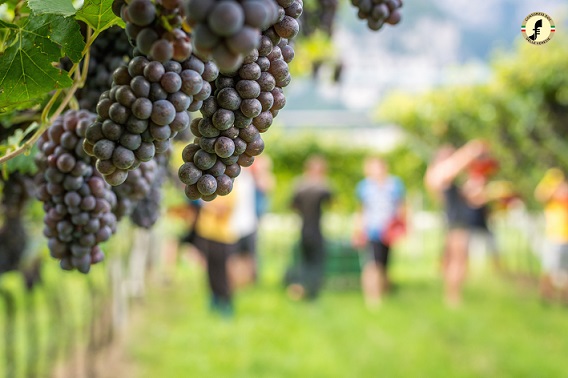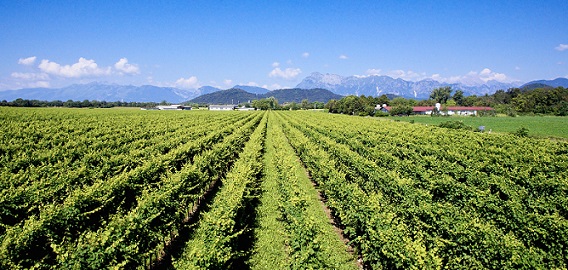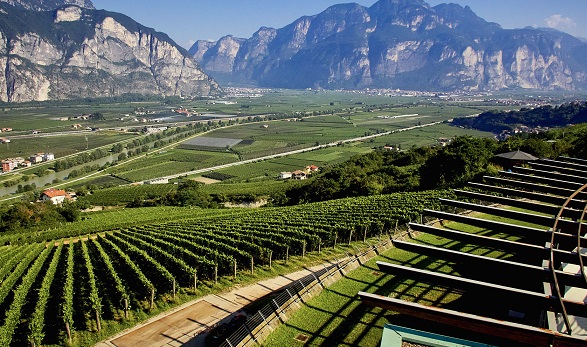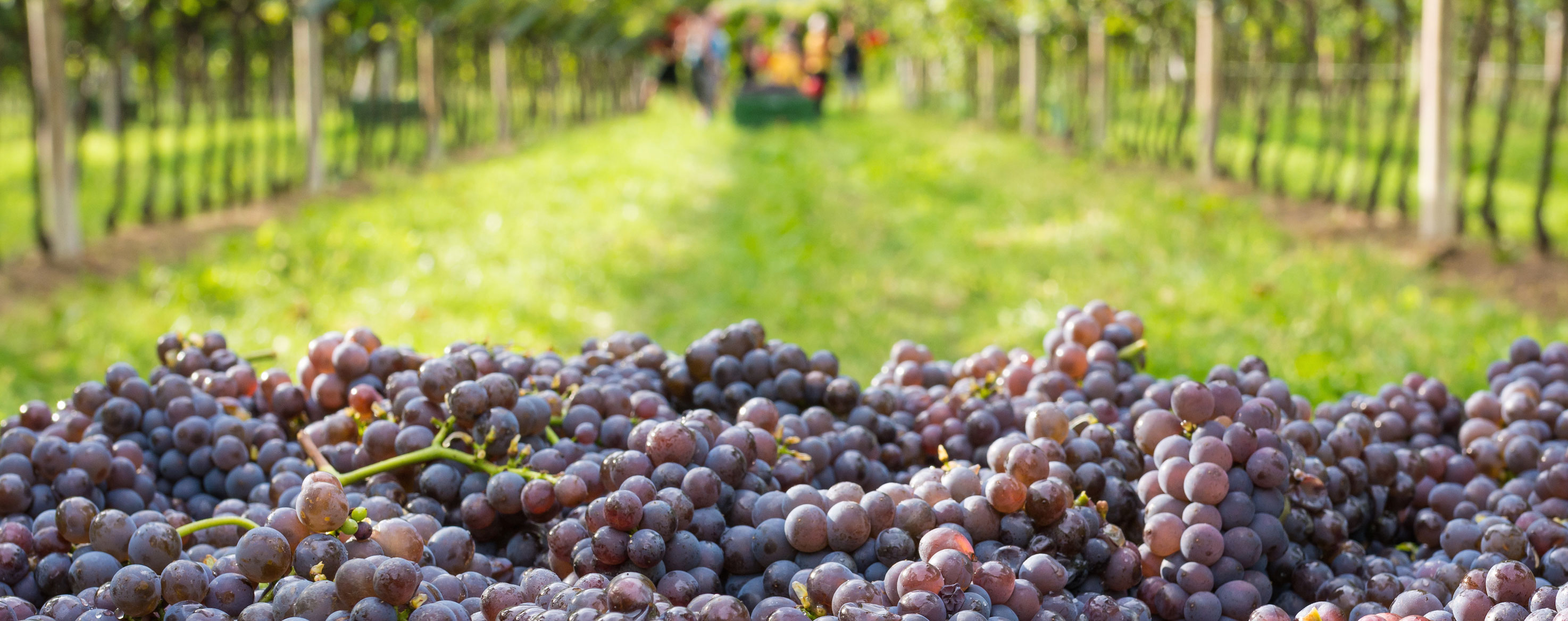The fourth harvest for the new Pinot Grigio delle Venezie DOC was also significant for testing the organisational skills of the region’s producers.
'The internal organisation of the companies was put to the test'As Albino Armani, chairman of the Consorzio delle Venezie DOC, told Canopy: “We all well know the indirect impacts that the coronavirus has had on the wine industry. On top of the direct impacts on the local winemaking, the Covid-19 emergency has impacted on the labour force in the vineyard, not being able to count on our seasonal workers coming from abroad, especially from Eastern Europe. The internal organisation of the companies was put to the test, among thermoscanners, social distancing and facemasks, increased grape harvesting costs... Fortunately, there were no outbreaks or negative situations here. The supply chain in northeast Italy has shown itself to be well prepared for the emergency.”

With yields lower, it meant there was a “substantial increase” in the price of grapes here. Albino told us: "Speaking of the Pinot Grigio delle Venezie DOC – and not of the Pinot Grigio of the other denominations – last year the reference grape price was set around 0,40 and 0,45 cents per kilo, this year we are between 0,45 and 0,55 cents per kilo.”
The grapes are now undergoing classic white vinifications – but with a few subtle differences. To discover these, Canopy contacted three significant players within the DOC.
RODOLFO RIZZI
Cantina Di Ramuscello and San Vito“The right amount of rain has fallen and the sun has never been excessive.” That’s how Rodolfo Rizzi, director of the 150-member cooperative Cantina di Ramuscello e San Vito summed up the season in Friuli Venezia Giulia.

“Even in our region, the good climatic trend has allowed the Pinot Grigio to ripen perfectly, recording both a good healthy bunch and an increase in quality compared to 2019. The sugar/acid ratio is also excellent, with a grape that is not excessively sugary, compared to other years, but with a considerably interesting acid content.
“The first wines released from fermentation are very homologous, varietal and rich in freshness and we are really satisfied with this.
“The Cantina Produttori di Ramuscello and San Vito owns a vineyard area of 760ha, while the members of the cooperative cultivate about 310ha of Pinot Grigio. In 2020, the Pinot Grigio harvest began on August 25 and all the grapes were harvested by ‘shaking’, thanks to the most modern harvesting machines.
“The grapes delivered to the winery during the first hours of the day, in order to take advantage of the low morning temperatures, arrive already destemmed and after a light crushing, through rubber rollers, go into the adjacent pneumatic presses. The pressing operation lasts about three hours during which, in successive phases, the free-run must is extracted and separated from the more energetic pressing.
“The must, once decanted from the suspended parts, is sent to the fermentation department which is composed of large stainless-steel tanks. The fermentation takes place with the use of selected yeasts that transform the sugar into alcohol at a controlled temperature of 16°C.
“Once the alcoholic fermentation is over, the new wine is taken to the refinement department where it will remain on lees for a few months.
“The care that we put in the vineyards, during the whole vegetative period of the vine, and the right choice of the harvest time, allow us, thanks to modern technologies and expert oenologists, to always obtain new and brilliant quality goals.”
As president of Assoenologi Friuli Venezia Giulia, Rodolfo said: “With respect to volumes, apart from a few days of intense rain, fortunately we were not hit by major calamities that could compromise the quantitative aspect of the grapes; there is a very slight decline compared to last year due to the spring drought that hit some areas of the region, but certainly not the one feared at the beginning of the season.”
ALBERTO MARCHISIO
Cantine Vitevis“The Pinot Grigio harvest in Veneto ended last week," declares Alberto Marchisio, general manager of Cantine Vitevis and president of Assoenologi Veneto Occidentale. “We had a fairly good season in terms of rain and temperatures, which gave us certainly a little less grapes in the cellar compared to last year – we are talking about 5% below the specification, or below 130 tonnes of grapes per hectare in compliance with the management measures of June 2020, for a total of about -15% on the 2019 campaign - but on the other hand of high quality, very balanced and with good freshness”.
The large cooperative Cantine Vitevis Società Cooperativa Agricola, formed with mergers in 2015 and 2019, has 1,350 vine-growers and an average annual production of 36m kg of grapes.
“We have a total vineyard area of 2,800ha, 450 of which produce Pinot Grigio," Alberto says.
“We started the harvest on August 22, 70% by machine and 30% by hand. Fortunately, we have a good cooperation each year with a group of students that are involved in this business and they come every year for the harvest season, so we didn’t have a problem getting our harvest team.
“Basically, the main work is in our vinegrowers’ hands, because it’s very important the work and the care they put in through the year to cultivate this amazing variety. We have a strict protocol they need to follow, especially our growers involved in the SQNPI Program, that they joined on a voluntary basis. SQPNI (Integrated Crop Management National Quality System) certification was achieved by Cantine Vitevis in 2018 and is recognised by the Italian Ministry of Agriculture, Food and Forestry Policies. Its aim is to follow integrated production guidelines to preserve natural resources for generations to come.
“Part of the grapes are cooled before pressing in order to enhance aromas and flavours.
“We use flotation to separate the must, and selected yeasts during the fermentation process. Fermentation temperature is about 16°C and it lasts for 10 days. Pinot Grigio remains on lees until the bottling is decided and it is preserved in tanks of different size from 500hl to 2,500hl depending on the organoleptic characteristics, the selection we want to create and the time we want to use to let it rest in the tanks.”
GOFFREDO PASOLLI
Gaierhof“We are very satisfied with the quality profile of Pinot Grigio, a little less with the quantity.”
So says Goffredo Pasolli, oenologist at the Gaierhof winery in Roverè della Luna, in the Trentino region. Gaierhof is one of four wineries owned and run by the Togn family (along with Valdadige, Lechthaler and the standard-bearer, Maso Poli).

Goffredo, who is also president of Assoenologi Trentino told Canopy:
“Gaierhof has about 45ha of Pinot Grigio, mainly located in the Roverè della Luna area north of Trento. Our production is about 5,000 quintals, we try to manage the harvest on the basis of the zonation made by us over the years, this allows us to enhance the differences that the various production areas (plain or hills) can give in the wines. Also, the fermentations are made in tanks, normally of small to medium size (250-300hl), using different yeasts selected to enhance the sensory profile of this grape variety. Compared to the previous harvest, in Trentino the quantity of Pinot Grigio harvested seems to be reduced by 15-20%.
“The Pinot Grigio harvest began around August 26 and lasted until September 14. The grapes are rigorously handpicked, which is fundamental for careful selection of the bunches in the vineyard.
“The winemaking operations involve destemming and crushing and then soft pressing for an average duration of three hours. The must obtained is cooled to about 10°C and clarified by static clarification. After decantation, fermentation is started with the use of selected yeasts, the fermentation temperature is variable from 15 to 20°C and the duration is about 10 days. Normally fermented in steel but sometimes wooden containers are also used to give more complexity and structure to the wine.
“After fermentation, we proceed with the first racking and start the ageing phase on the yeast with frequent battonages, a fundamental operation to preserve and increase the typical fruity notes of Pinot Grigio and harmonise the palate of the wine. The ageing phase lasts from three to eight months for the higher-end products.
“Normally, before bottling, the wine is cold stabilised, clarified and finally filtered.”













.png)






